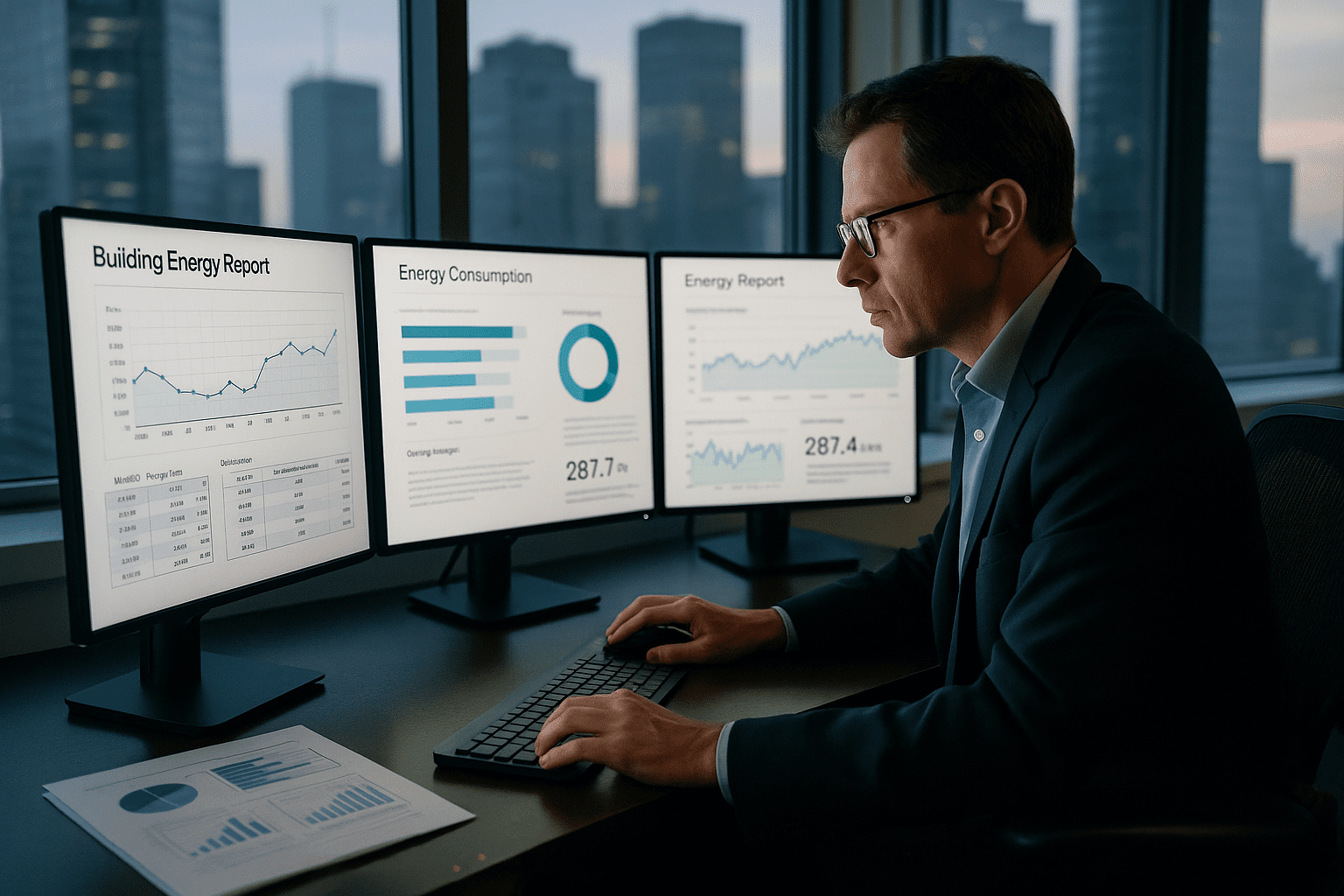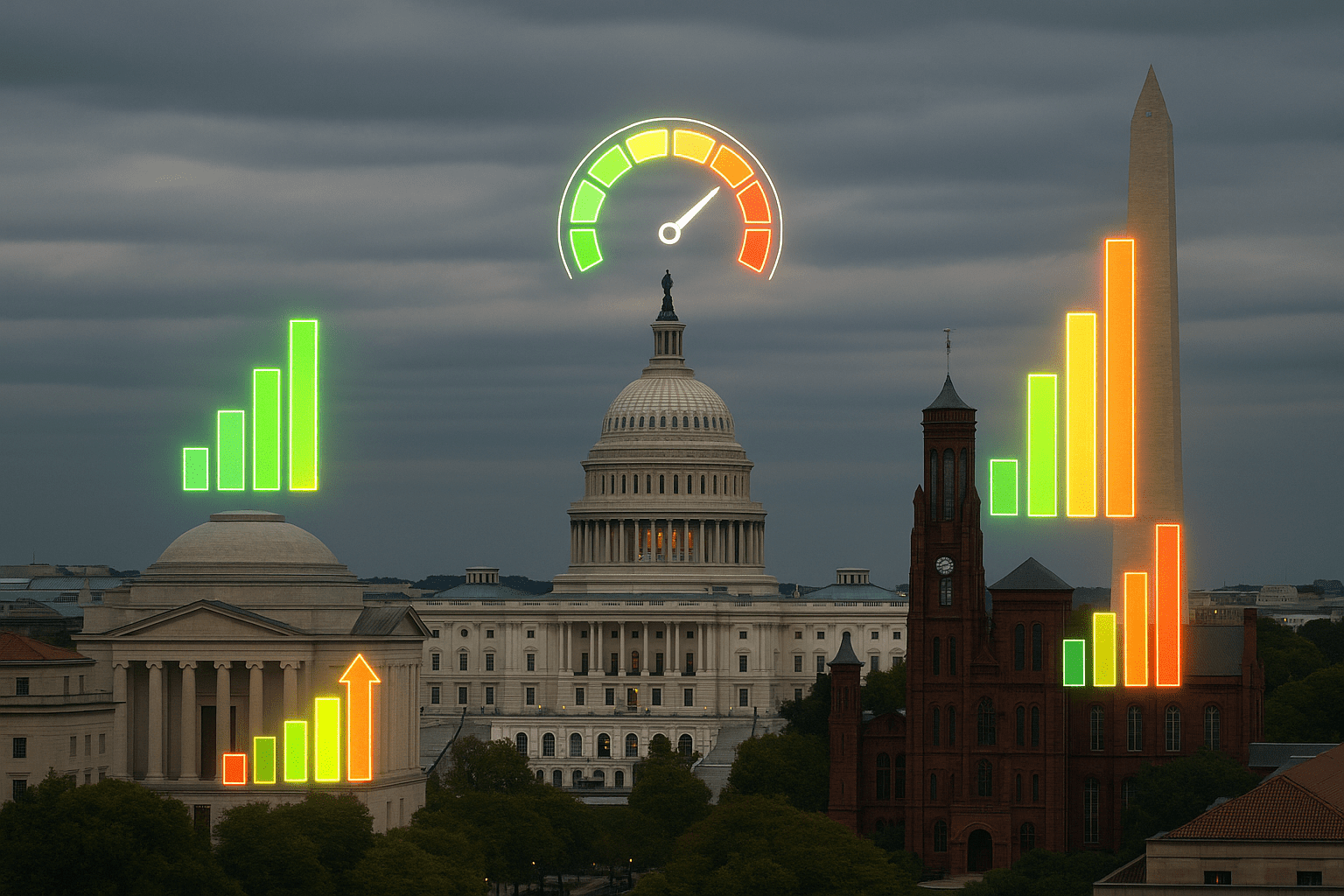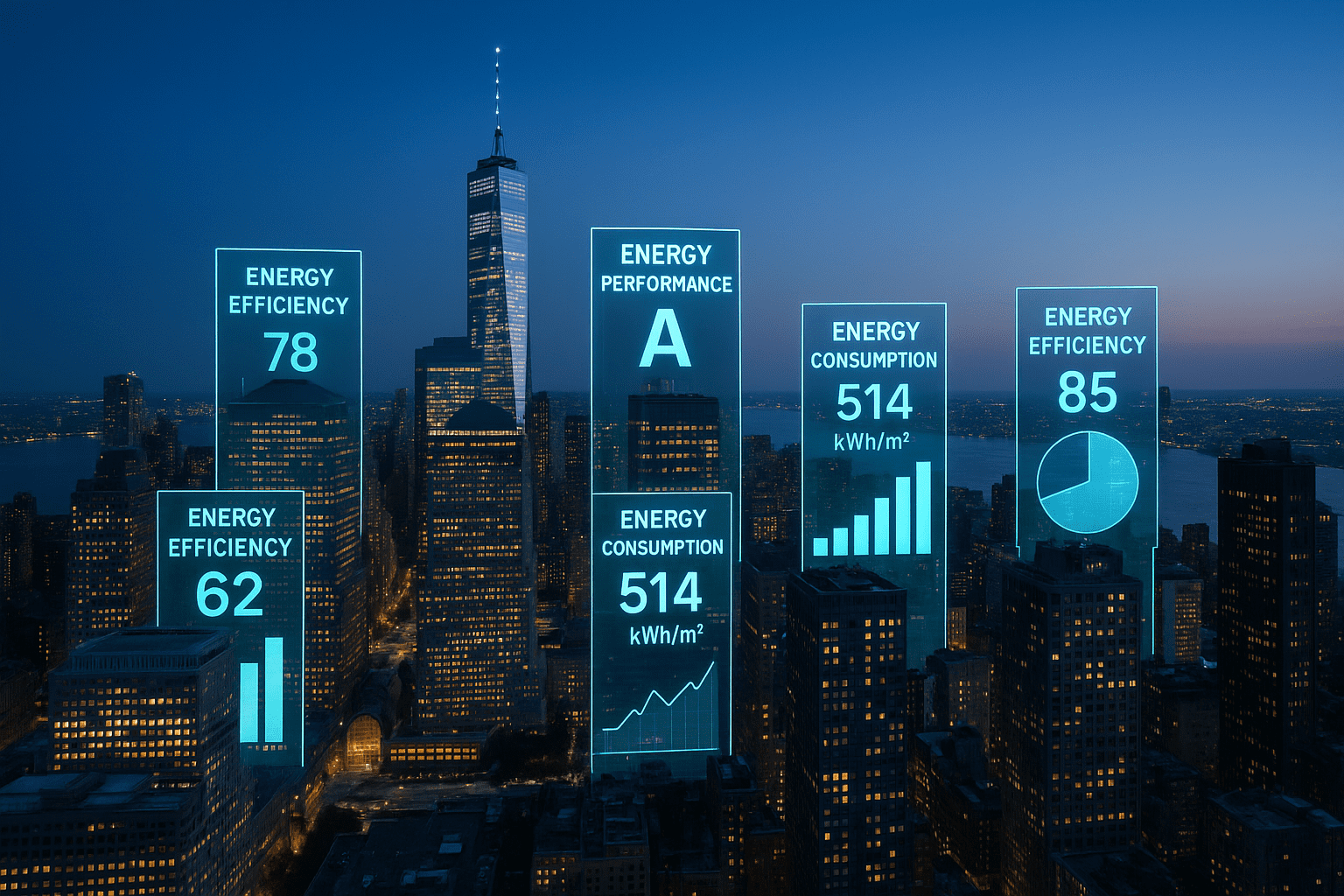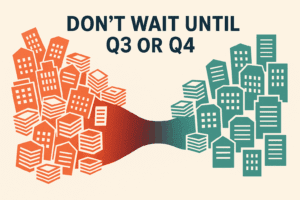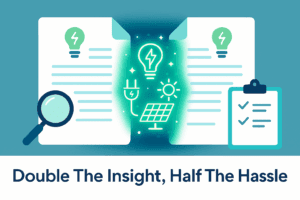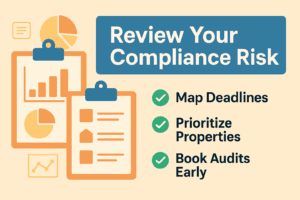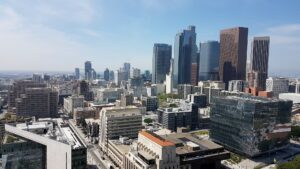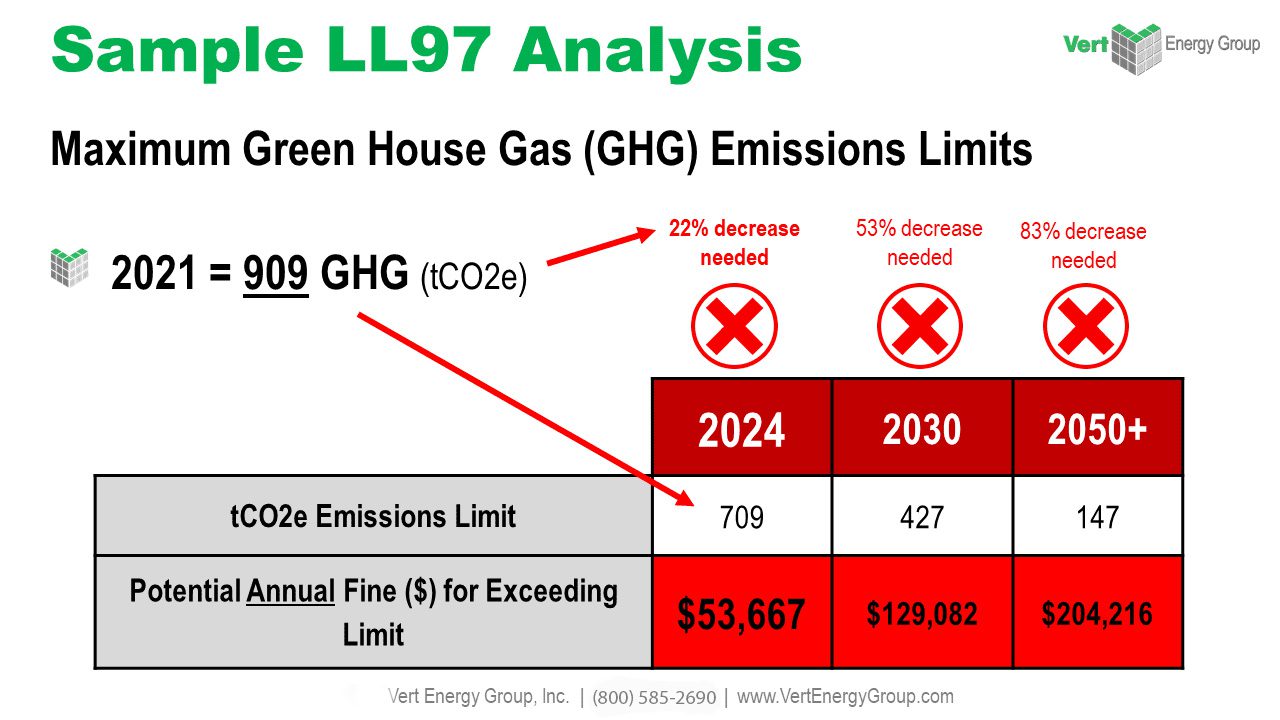Are You Ready For The New Energy Compliance Deadlines? 2026 Is Closer Than You Think
From NYC to Oregon, New Rules Are Reshaping the Energy Landscape
Benchmarking is over. That’s the good news. The important news?
2026 will be a landmark year for energy ordinances across the U.S. 2026 brings new emissions caps, performance standards, and mandatory upgrades. In this article we break down:
- What’s changing under Washington D.C.’s BEPS deadlines
- Why Oregon’s latest benchmarking rules deserve your attention.
Let’s dive in.
I. NYC Local Law Prep: LL84, LL87, LL88, LL97 | Are You Ready for 2026?
For New York City building owners, 2026 will be a pivotal year for energy laws. Four major regulations, LL84 (Benchmarking), LL87 (Energy Audits & Retro-Commissioning), LL88 (Lighting & Submetering), and LL97 (GHG Emissions Limits) impact property owners at once. This raises the demand for immediate planning and cross-functional coordination.
Here’s what’s on the radar:
- LL84: Annual benchmarking is still mandatory, and missing the April 30 deadline can lead to fines of $500 per quarter.
- LL87: If your building’s tax block ends in 6, you’re required to submit an energy audit and retro-commissioning report by the end of 2026.
- LL88: For commercial spaces over 25,000 sq ft, lighting system upgrades and tenant submeters are required as part of the city’s energy efficiency push.
- LL97: The grace period has ended on June 30, 2025. By 2026, enforcement begins in full, with carbon fines starting at $268 per metric ton of CO₂e above your cap.
Delaying won’t work. Fine enforcement will come. Syncing your benchmarking, auditing, upgrade, and emissions plans lets you streamline compliance and avoid expensive retrofits down the line.
VertPro®’s expert provide the support NYC property owners rely on to get compliant. Our team can help you update your property to not only get compliant, but prevent expensive retrofits on existing upgrades. Find more details ‘how’ below.
If you own or manage property in Washington D.C you should be preparing for the., Building Energy Performance Standards (BEPS). As part of D.C.’s aggressive climate strategy, the BEPS program requires buildings to meet specific EUI (Energy Use Intensity) thresholds.
Here’s what you need to know:
- Who’s Affected: Privately owned commercial buildings over 25,000 sq ft are subject to BEPS. If your building’s EUI is above the city’s median, you’re in the “performance pathway.”
- 2026 Deadline: The first five-year compliance cycle ends in 2026. Buildings must demonstrate that they’ve met their improvement targets, or show substantial progress toward them.
- Enforcement Risk: Non-compliance can trigger hefty fines and put properties at risk of public listing on D.C.’s performance registry.
What to do now:
- Identify low-cost, high-impact upgrades like HVAC tuning, lighting retrofits, or controls optimization.
- Develop a compliance plan with clear milestones before the 2026 closeout.
VertPro® helps D.C. property owners get compliant, forecast energy savings, and document performance improvements all while keeping your building eligible for incentives and avoiding fines.
Don’t let the deadline sneak up. With the right strategy, BEPS compliance can be a competitive advantage, lower your costs, and improve your building’s ROI!
Oregon is implementing building energy benchmarking requirements. If you own or manage large commercial buildings in cities like Portland or Eugene, here are the rules you need to know.
Here are the key things to comply with:
- Who Must Comply: The statewide law targets commercial buildings 20,000 sq ft and larger, requiring them to report annual energy performance using ENERGY STAR® Portfolio Manager.
- Deadlines Vary: Initial compliance deadlines are being phased in between 2025 and 2026. Portland, for example, has its own Building Performance Standard (BPS) that layers additional requirements on top of benchmarking.
- Penalties for Non-Compliance: Missing your reporting deadline or submitting incomplete data could result in escalating fines—and put your building on a non-compliance list visible to the public.
Oregon’s ordinance is there to drive long-term reductions in energy use and carbon emissions. Benchmarking is the first step toward that goal.
VertPro® provides full benchmarking support for Oregon buildings, including account setup, data verification, and ongoing reporting. If you’re subject to Portland BPS or upcoming state-level mandates, our team can help you stay ahead of the curve, and ahead of enforcement.
With the passage of the One Big Beautiful Bill Act (OBBBA) in July 2025, a lot has changed. From shrinking tax incentives to shifting federal priorities, property owners need to adjust their energy strategies right away.
Here’s what’s changing:
- Expiring Incentives: Clean energy tax credits for solar, batteries, heat pumps, and other electrification technologies are being phased out earlier than planned. To qualify, projects must begin construction by mid-2026 or enter service by the end of 2027.
- Increased Retrofit Costs: As incentives disappear and tariffs loom, retrofits are expected to become more expensive. Components sourced from foreign entities may also face new restrictions—further impacting project viability and timelines.
- More Pressure from Local Laws: With less federal support, local building performance laws like NYC’s LL97, D.C.’s BEPS, and Portland’s BPS take center stage. These ordinances will likely drive compliance planning—and determine which upgrades remain economically viable.
For commercial property managers and asset owners you have a short window to lock in retrofit projects, secure remaining incentives, and align with upcoming performance standards.
VertPro® works with clients to reevaluate project timelines, optimize capital investments, and pivot strategies in response to the evolving policy environment. With 2026 fast approaching, acting early gives you time (and resources) to get compliant.
How independent is your building’s energy supply? Could your property withstand utility price spikes, grid disruptions, or unexpected outages? If it was energy independent it could.
Here’s why energy independence matters now more than ever:
- Utility Costs Are Rising: Electricity rates continue to climb in many regions, sometimes increasing by double-digit percentages. Reducing dependency on the grid can significantly cut longterm operating costs.
- Grid Resilience Is Limited: Extreme weather, aging infrastructure, and peak demand can lead to outages—even in major cities. On-site generation or storage offers a buffer against these risks.
- Enhanced Sustainability: Solar panels, battery storage, and backup systems can boost your ESG profile while aligning with local ordinances like BPS or BEPS.
- Tenant Expectations: Today’s occupants more than ever look for LEED, WELL, or net-zero-ready buildings. Energy independence upgrades help you meet those market expectations and attract premium tenants.
This month, consider these strategic moves:
- Evaluate on-site solar and battery feasibility given your rooftop or lot footprint.
- Invest in smart controls and load-shifting to reduce peak demand and cost.
- Embed backup systems that keep your building operational during grid failures.
VertPro® can help you can assess energy independence solutions tailored to your asset type. This includes offering procurement support, performance modeling, and project delivery so your property stays powered, lean, and attractive all year long.
